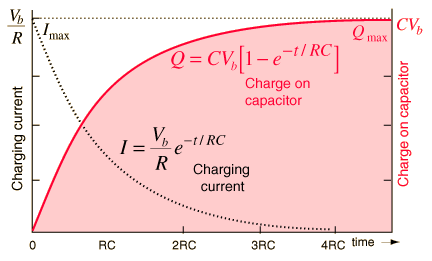 "HammerheadFistpunch" (hammerheadfistpunch)
"HammerheadFistpunch" (hammerheadfistpunch)
07/25/2016 at 16:54 ē Filed to: None
 0
0
 20
20
 "HammerheadFistpunch" (hammerheadfistpunch)
"HammerheadFistpunch" (hammerheadfistpunch)
07/25/2016 at 16:54 ē Filed to: None |  0 0
|  20 20 |

An 80 amp alternator will charge at 80 amps (more or less...before the voltage cutoff that is), right? Seems like thatís a lot of amps to throw at a battery. Iím just trying to wrap my head around something related to my charge system.
What I mean specifically, is there any circuit or regulator that limits amps to the battery below the maximum output of the alternator?
 TheBloody, Oppositelock lives on in our shitposts.
> HammerheadFistpunch
TheBloody, Oppositelock lives on in our shitposts.
> HammerheadFistpunch
07/25/2016 at 16:59 |
|
I would think that there is a relay that would regulate the amperage output. What does the circuit diagram of your truck say?
 bob and john
> HammerheadFistpunch
bob and john
> HammerheadFistpunch
07/25/2016 at 16:59 |
|
motorcycles have a voltage rectifier...Id assume cars have something similar.
 HammerheadFistpunch
> bob and john
HammerheadFistpunch
> bob and john
07/25/2016 at 17:01 |
|
Well thatís voltage, Iím talking about amps. Alternators also have rectifiers.
 bob and john
> HammerheadFistpunch
bob and john
> HammerheadFistpunch
07/25/2016 at 17:03 |
|
it might be built into the alternator.
 RamblinRover Luxury-Yacht
> HammerheadFistpunch
RamblinRover Luxury-Yacht
> HammerheadFistpunch
07/25/2016 at 17:03 |
|
Maybe, but not typically, I donít think. I could be wrong. It would depend where the alternator comes into the system. Some setups have a main ignition circuit fusible link, but I think normally the alternator ties in somewhere close to the main lead (i.e. on the way to the starter). Thatís a leg with no limits at all. Also, 80A sounds like an awful lot, but thatís ~8 120W light bulbs. Itís not a staggering amount of *power*, just amperage. Also, unless the battery is totally gefuckt, it will put up some voltage of its own and regardless, it has internal resistance, so youíd likely never see the full output passing through the battery no matter what. Unless, say, you took a 12" spike and drove it from one end to the other, shorting the end plates and draining the battery.
 HammerheadFistpunch
> TheBloody, Oppositelock lives on in our shitposts.
HammerheadFistpunch
> TheBloody, Oppositelock lives on in our shitposts.
07/25/2016 at 17:04 |
|
Looks like this

feels like this
But seriously, I will have to check it out at home.
 HammerheadFistpunch
> RamblinRover Luxury-Yacht
HammerheadFistpunch
> RamblinRover Luxury-Yacht
07/25/2016 at 17:06 |
|
Iím trying to do some math on recharge time to compare to whatís actually happening. 80 amps is the factory number so Iím assuming 70, but at 70 amps, that means my main battery should go from half dead to fully charged in 30 minutes...and its not.
 TheBloody, Oppositelock lives on in our shitposts.
> HammerheadFistpunch
TheBloody, Oppositelock lives on in our shitposts.
> HammerheadFistpunch
07/25/2016 at 17:09 |
|
Heh, thatís right (itís been a long day). IIRC the voltage regulator manages the amp output by controlling the field amperage and that is based on what is being drawn by the system at the time.
Edit: Wow Kinjaíd big time.
 RamblinRover Luxury-Yacht
> HammerheadFistpunch
RamblinRover Luxury-Yacht
> HammerheadFistpunch
07/25/2016 at 17:12 |
|
Itís most likely going to be a saturation kind of effect. Similar at least in broad strokes to charging a capacitor - actual current (and thus accumulation of charge) drops off as the voltage in the charged item builds up:

Youíll get a majority of your charge from close to dead back in reasonably short order, but the last maybe 20%, ages and ages. And thatís in ideal circumstances - batteries in real life can be complicated.
 OPPOsaurus WRX
> HammerheadFistpunch
OPPOsaurus WRX
> HammerheadFistpunch
07/25/2016 at 17:17 |
|
Wtf? Natural selection is right around the corner for him
 HammerheadFistpunch
> RamblinRover Luxury-Yacht
HammerheadFistpunch
> RamblinRover Luxury-Yacht
07/25/2016 at 17:21 |
|
Batteries, it seems, are a lot like life; complicated and resistant to large changes in current
 Tekamul
> HammerheadFistpunch
Tekamul
> HammerheadFistpunch
07/25/2016 at 17:37 |
|
No. Your battery canít absorb that much current probably ever, but certainly not above total discharge.
When nearly empty, the peak may be near that much, but as internal voltage rises, the resistance rises significantly.
The last 10% will take longer than the first 50%.
That amp rating is more about power for starting and accessories. Not batteries that are a few volts below the alternatorís output.
 Snuze: Needs another Swede
> HammerheadFistpunch
Snuze: Needs another Swede
> HammerheadFistpunch
07/25/2016 at 17:37 |
|
I used to be qualified as submarine battery charging electrician so I should be able to explain this much better than I actually can, but here goes:
Charging current to the battery is regulated by the voltage differential between the alternator and the battery.
On a healthy battery you should see around 12.5 to 12.8 volts. Output from the alternator should be around 13.2 to 13.5 volts. So you have a differential of anywhere from 0.4 to 1.2 volts.
Also consider - your 80 amp rated alternator canít always provide 80 amps. SAE actually has a standard for rating alternators and they rate alternators in a format like 50/100-13.5V which means it provides 50 amps at low test speed (1500 rpm) and 100 amps at high test speed (6000 rpm). So if you have 80 amps, and you spend most of your time cruising around, you probably only ever have half that available to you.
Also, electrical systems only draw as much as they need based on the load of the system. You have a whole bunch of loads in parallel, so if you knew all the resistances of everything you could come up with an equivalent resistance. Letís say itís half an ohm, and your alternator is 13.5 volts, Kirchoffs Voltage Law says I=V/R (Current = Voltage / Resistance), which means I = 13.5 / 0.5 = 27 amps. So going back to the previous paragraph, you generally only have 40 amps of current available (unless youíre running at high RPM all the time), and youíre using 27 of them to power normal loads in the vehicle, so you have 13 amps ďleftĒ that could be using to charge the battery.
 LongbowMkII
> HammerheadFistpunch
LongbowMkII
> HammerheadFistpunch
07/25/2016 at 17:40 |
|
Batteries, like life, work best when loaded with acid.
 gogmorgo - rowing gears in a Grand Cherokee
> HammerheadFistpunch
gogmorgo - rowing gears in a Grand Cherokee
> HammerheadFistpunch
07/25/2016 at 19:19 |
|
Considering a typical battery puts out well over 500 amps, Iím pretty confident it wonít care if itís hit by a full 80 when charging. Actually, 80 is a pretty small alternator. A high output alternator could be putting out 250 amps.
 HammerheadFistpunch
> gogmorgo - rowing gears in a Grand Cherokee
HammerheadFistpunch
> gogmorgo - rowing gears in a Grand Cherokee
07/25/2016 at 20:01 |
|
Iím talking amp hours not cranking amps. My battery is rated at 55ah
 AMGtech - now with more recalls!
> HammerheadFistpunch
AMGtech - now with more recalls!
> HammerheadFistpunch
07/26/2016 at 02:20 |
|
Something something voltage regulator something system load something electrical laws something something... something.
Others have mostly answered already but Iíll elaborate a bit more to hopefully help clarify.
Alternators will rarely charge at their rated output. Depending on various factors itís more realistically in the 10-30% range. Engine speed, system load, and the voltage regulator all play roles here. Yes, the voltage regulator is ďjust voltageĒ. But thatís only one third of the story. Voltage, amperage, and resistance (ohmage!?) all go hand in hand in hand directly affecting one another. Basically, itís ridiculously complicated but it works out so that a battery should never be overcharged by the alternator and almost always gets what it needs, unless of course the alternator is malfunctioning. There is also some debate on whether an alternator will sufficiently charge a flat battery just by running, like an actual battery charger would. Iíve seen it go both ways, but this could be affected by a bunch of different factors.
This mostly applies to older and simpler charging systems. Modern alternators often communicate with a battery management system via LIN or CAN and will completely cease charging operations under certain conditions and only charge during times of ďfreeĒ energy like coasting downhill, unless otherwise necessary. They do this for improved fuel economy since an alternator that is charging will have drag. Same concept as regenerative braking but on much smaller scale.
Many vehicles have fuses for the charging/starting system, usually 150-300 amps. They typically only fail when the starter draws excessive amperage due to increased mechanical load such as a seized engine or dragging starter motor (rust/corrosion usually).
 uofime-2
> HammerheadFistpunch
uofime-2
> HammerheadFistpunch
07/26/2016 at 14:22 |
|
Alternators use a voltage feedback loop to control their output current and I want to say that if you pump too much current into a battery its resistance increases so it's voltage will as well this throttling back the alternator.
 gogmorgo - rowing gears in a Grand Cherokee
> HammerheadFistpunch
gogmorgo - rowing gears in a Grand Cherokee
> HammerheadFistpunch
07/26/2016 at 20:34 |
|
Thatís a measurement of capacity, effectively the volume of the container. It could put out the equivalent of 55 amps for one hour before itís depleted, or 1A for 55 hours. Or even 3500A for 55s... but I think that would break it.
 brianbrannon
> HammerheadFistpunch
brianbrannon
> HammerheadFistpunch
07/27/2016 at 20:19 |
|
Simple answer 80 amps is the max but that doesnít happen at the rpms you drive at. Also part of the output is going to running the car so it would take more than an hour to charge. Also alternators arenít designed for charging a dead battery. They are meant to keep the battery charged after minor discharge